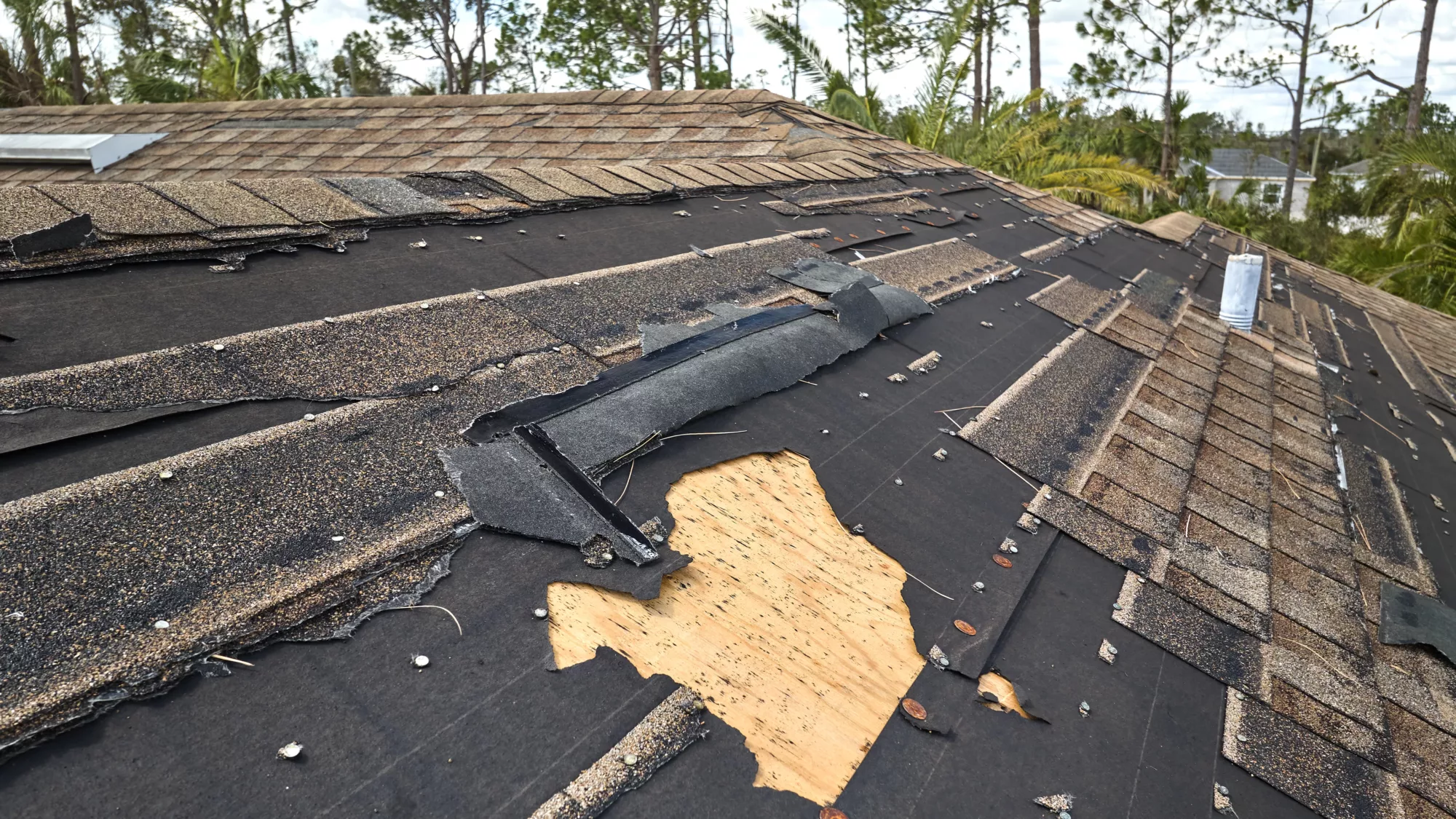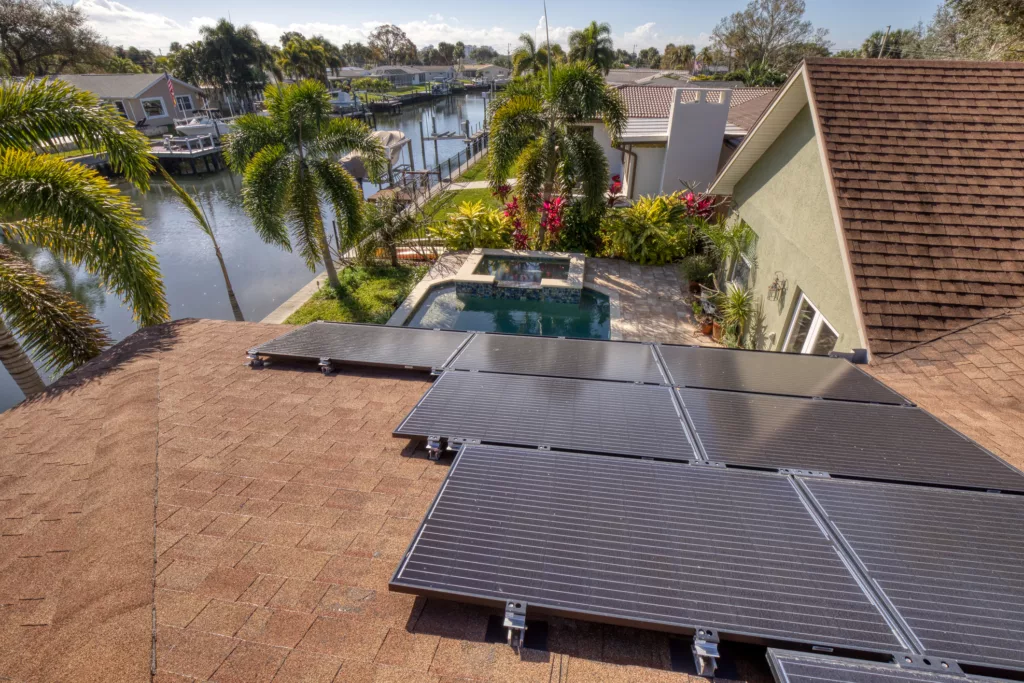Florida, aptly nicknamed the Sunshine State, is a powerhouse for solar energy potential. With an average of 237 sun-soaked days annually, Floridians are uniquely positioned to harness this abundant natural resource. At Current Home, we’ve witnessed firsthand the transformative impact of solar energy on homeowners across the state.
Assessing Your Roof’s Solar Readiness
Is Your Roof Solar-Ready?
Before jumping on the solar bandwagon, it’s crucial to evaluate your roof’s condition. Here’s what we at Current Home look for:
- Roof Age: Most asphalt shingle roofs last 15-20 years. If yours is nearing this age, replacement before solar installation might be wise.
- Structural Integrity: We check for sagging areas, water damage, or other signs of wear and tear.
- Material Compatibility: Some roofing materials, like slate or wood shakes, may not be ideal for solar panel installation.
The Roof Inspection Process
A thorough roof inspection is a must. Our process includes:
- Visual Assessment: We examine your roof’s overall condition, looking for visible damage or wear.
- Structural Evaluation: Our experts check for any sagging or uneven roof planes.
- Attic Inspection: We look for signs of water intrusion or daylight peeking through the roof boards.
The Solar Roof Replacement Journey
Planning Your Solar Roof Upgrade
If you already have solar panels, here’s what to expect:
- System Disconnection: Your solar company will safely disconnect and remove the existing panels.
- Equipment Storage: Panels and mounting hardware will be securely stored during roof work.
- Documentation: We’ll carefully document the current panel layout for accurate reinstallation.
Choosing the Right Roofing Materials
Select materials that are:
- Durable: Look for options that match or exceed the 25-30 year lifespan of solar panels.
- Solar-Friendly: Materials like asphalt shingles or metal roofing work well with solar installations.
- Code-Compliant: Ensure materials meet local building codes and HOA regulations.
The Roof Replacement Process
Here’s a step-by-step breakdown of what to expect:
- Removal: We’ll strip away old roofing materials, exposing the roof deck.
- Deck Inspection: Our team will thoroughly examine and repair the roof deck if needed.
- Weatherproofing: We’ll install new underlayment and flashing for optimal protection.
- New Roofing: Your chosen roofing material will be expertly installed.
Solar Panel Reinstallation
Once your new roof is in place:
- Mounting Hardware: We’ll securely install new mounting brackets.
- Panel Placement: Solar panels will be reinstalled in their original configuration.
- System Reconnection: Your solar system will be reconnected to the grid and thoroughly tested.
Financial Considerations for Your Solar Roof Project
Roof Replacement Expenses
Factors influencing roofing costs include:
- Roof Size and Complexity: Larger or more intricate roofs will cost more.
- Material Choice: Premium materials like metal or tile will increase costs.
- Labor Rates: Prices can vary based on your location within Florida.
Maximizing Your Solar Roof Investment
Energy Efficiency Upgrades
To get the most out of your new solar roof:
- Insulation: Improve your attic insulation to reduce energy loss.
- Energy-Efficient Windows: Upgrade to double or triple-pane windows to minimize heat transfer.
- Smart Home Integration: Install smart thermostats and energy management systems for optimal efficiency.
Monitoring and Maintenance
Keep your system running smoothly with these tips:
- Regular Cleaning: Gently rinse panels to remove dust and debris.
- Performance Tracking: Use provided apps or portals to monitor your system’s output.
- Professional Check-ups: Schedule annual inspections to catch and address any issues early.
The Future of Solar Roofing in Florida
Emerging Technologies
The solar industry is constantly evolving:
- Integrated Solar Roofing: New products combine roofing materials with built-in solar cells.
- High-Efficiency Panels: Next-gen panels are squeezing more power from every ray of sunshine.
- Advanced Energy Storage: Innovations in battery technology are making off-grid living more feasible.
Policy Landscape
Stay informed about these Florida-specific policies:
- Net Metering: Sell excess energy back to the grid for credits on your bill.
- Property Tax Exemption: Your solar installation won’t increase your property taxes.
- Sales Tax Exemption: Save on equipment costs with this state incentive.
Should I Replace My Roof Before Installing Solar Panels?

If you haven’t made the switch to solar yet, it makes sense to look at your roof before taking the plunge. While a roof replacement is not required for solar installation, scheduling a roof inspection beforehand is critical to determine whether your roof can withstand the installation.
Solar panels have an average lifespan of 25 years and are designed to withstand varying weather conditions. Your solar power system requires a stable foundation for longevity and optimal performance. Professionals recommend replacing a roof that has significant damage or is nearing the end of its useful life.
While a roof replacement and solar installation require a costly upfront investment, it’s a smart financial decision in the long run. With a new roof, it’s unlikely you will need to reroof and schedule significant repairs during the lifespan of your solar system, reducing the costs associated with removing and reinstalling your solar panels.
Go Solar with Current Home
Switching to solar energy can seem overwhelming. However, Current Home makes this process seamless and easy for Florida residents. Our team of experts will answer all your questions, design a customized solar system that matches your needs, and guide you through the installation process. Request a quote today!






